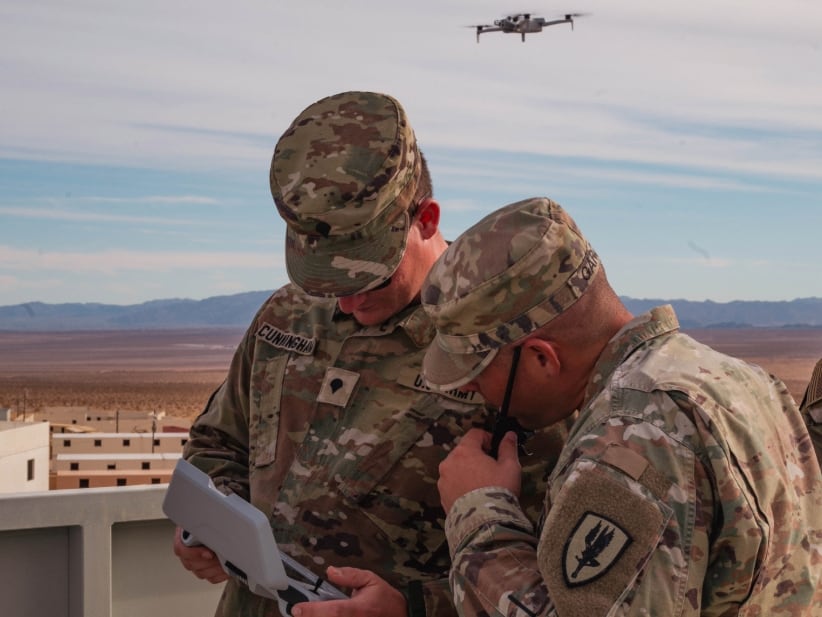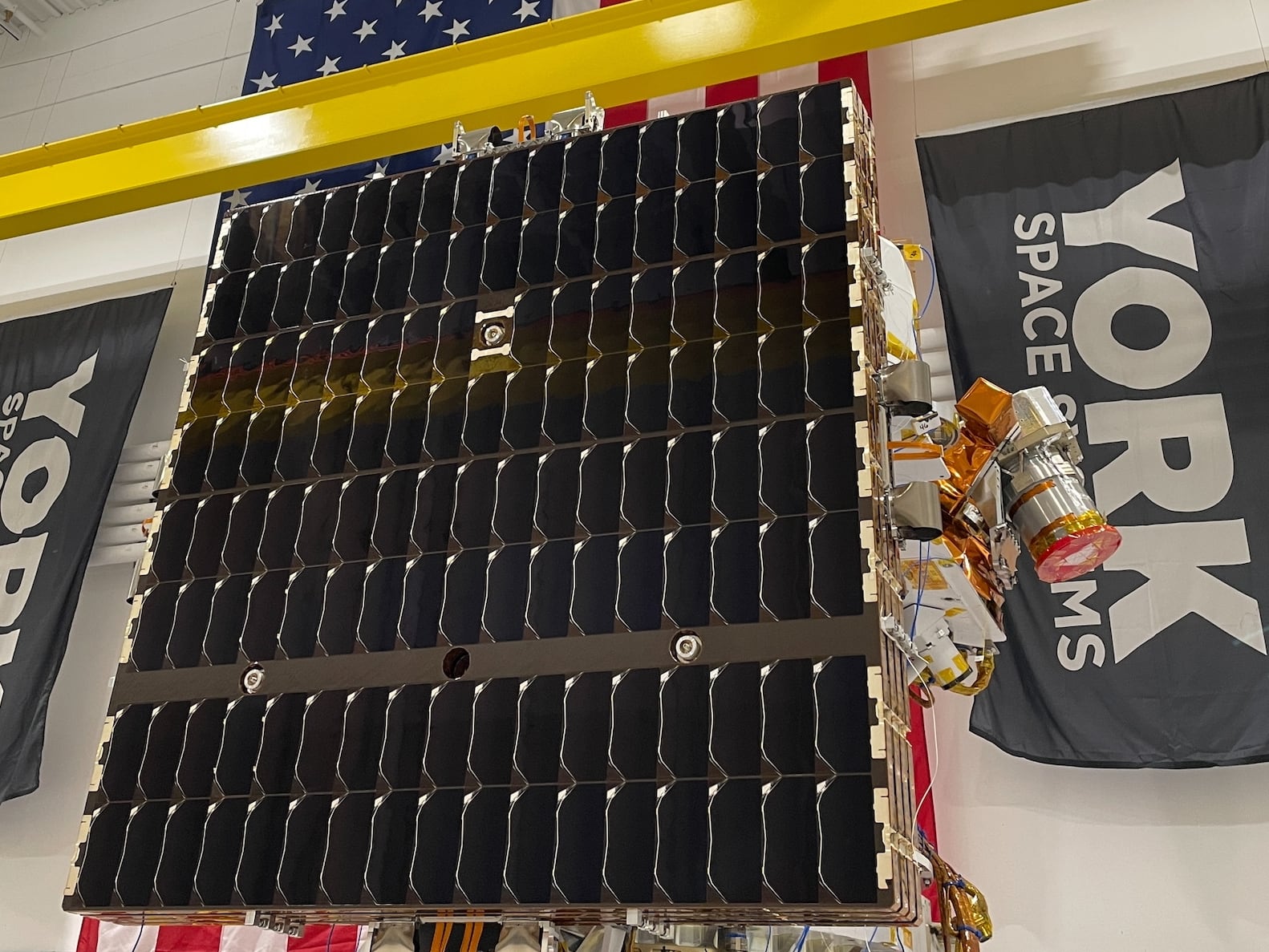The Defense Innovation Unit announced Feb. 14 it has selected 37 systems and components to add to its list of commercial drone capabilities certified for military use, pending final approvals to ensure they meet congressionally mandated cybersecurity and supply chain standards.
DIU in November staged a three-day flight demonstration at Marine Corps Air Ground Combat Center Twentynine Palms in California. Following the event, the department selected 23 systems as well as 14 unique drone components, which are now in the midst of a months-long cybersecurity verification process.
Once completed, the approved drones will be added to DIU’s Blue Unmanned Aircraft Systems, or UAS, List and the components to its Blue UAS Framework, making them available for the military services to buy.
“Advocacy for many of these new and enabling technologies continues to be critical for getting capabilities to the warfighter,” DIU said in a statement. “With the cycle for development of new capabilities in this space approaching three months, and current DOD timelines and processes for drone delivery lagging warfighter needs by multiple years, providing warfighters access to capabilities they need now through the Blue List and Framework is even more important.”
Small commercial drones have featured heavily in recent military conflicts, including those in Ukraine and the Middle East. As the market for these capabilities has grown, particularly in China, the U.S. government has been increasingly concerned about the security of the technology and the possibility that data collected by these systems could be shared with adversaries.
That concern led to a series of congressional mandates blocking the Pentagon from buying or using certain drone components made by Chinese companies. Units wanting access to commercial drones had to go through an intensive exemption process to get a waiver that lasted only six months before needing to be resubmitted.
DIU established Blue UAS in 2020 to create another avenue for validation. Since then, the organization has on-ramped 15 systems. It also created an inventory of approved components and software through its Blue UAS Framework.
Although the Blue effort has essentially become the government standard for commercial drone procurement, DIU has heard from companies and DOD users that the process was not meeting their needs. Military units said the list wasn’t providing the types of systems the military most urgently needs. Meanwhile, drone firms said there were too many financial and procedural hoops to jump through to get on it.
To address those concerns, DIU opted to refresh the Blue UAS List and build out the Blue UAS Framework effort. In response, firms from the U.S. and 18 partner countries applied to participate in last fall’s demonstrations.
The drones selected through that event are: Hoverfly Spectre, Neros Archer, ModalAI Stalker, Zone 5 Paladin, Teledyne FLIR Black Hornet, Parrot Anafi UKR, Skyfront Perimeter 8, Mountain Horse Solutions Rotron DT-300, Vantage Robotics Trace, Easy Aerial Sparrow, Shield AI V-BAT, Edge Autonomy VXE-30 Stalker, Skyfall Vampire, Quantum Systems Vector, AeroVironment Dragon, Zepher Flight Z1, Kraus Hamdani Aerospace K1000, Teal Black Widow, Freefly Systems Astro, Skydio X10D, Flightwave Edge 130, PDW C100 and Anduril Ghost/GhostX.
Notably, the list features drones from Ukrainian companies, including Skyfall’s Vampire and Parrot’s Anafi drone. It also has several first-person-view drones, which can wirelessly transmit video feeds to displays like goggles or headsets. The addition of FPV systems and tethered platforms came in direct response to feedback from military users, DIU said.
Courtney Albon is C4ISRNET’s space and emerging technology reporter. She has covered the U.S. military since 2012, with a focus on the Air Force and Space Force. She has reported on some of the Defense Department’s most significant acquisition, budget and policy challenges.








